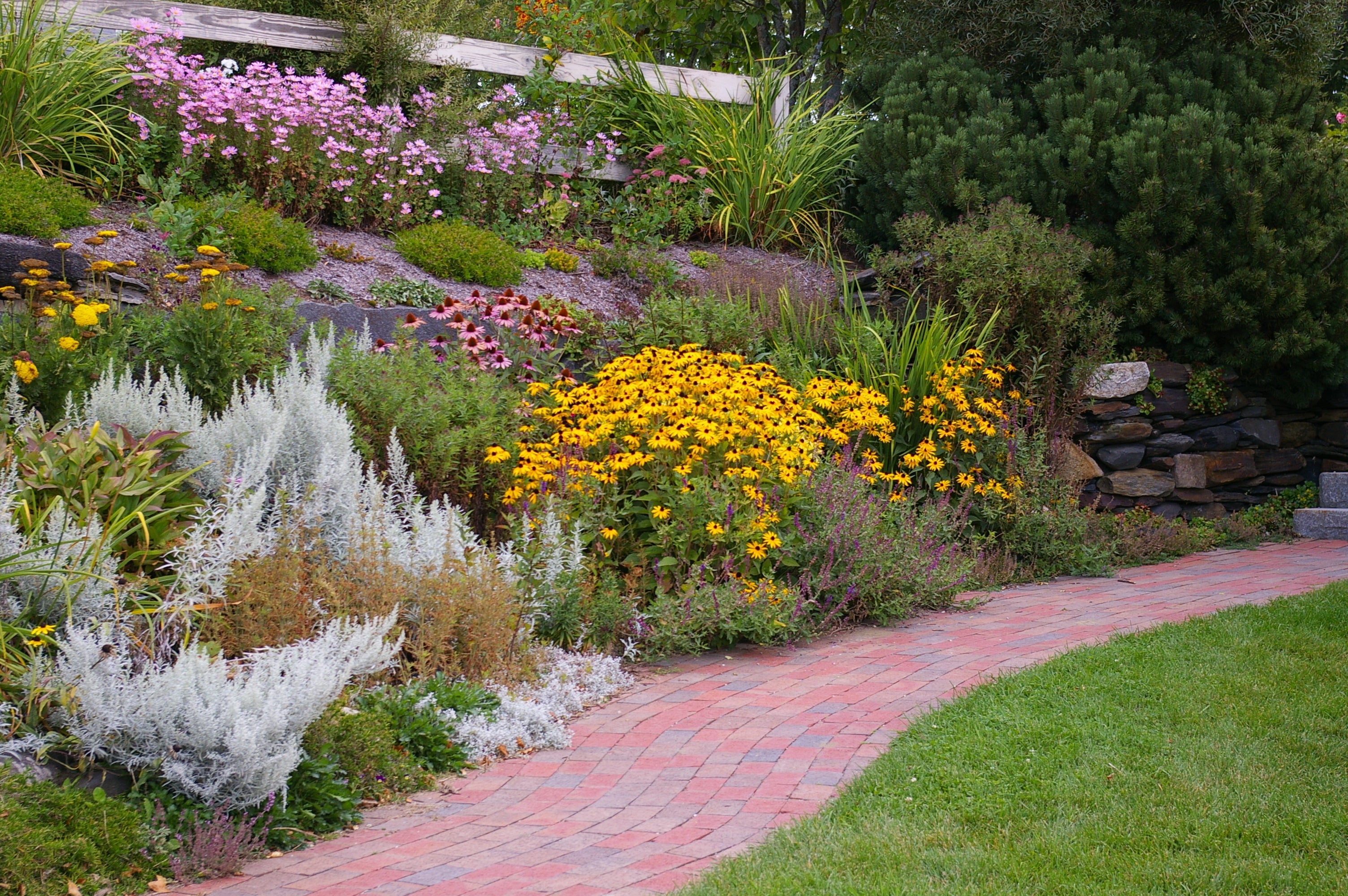Why Fall is the Best Time to Plant Native Perennials in Texas

Many of us only think of planting in the spring when we prepare to grow our flowers, herbs, and veggie gardens. While spring is usually the best time for planting annuals, the opposite is almost always true for perennials.
Today’s article will examine in depth why fall is the best time to plant perennials in Texas. Let’s dig in so we can get ready for fall planting!
Why Fall is The Best Time to Plant Perennials in Texas
Fall is generally the best time to plant perennials in most climates, but especially in Texas. Our unpredictable springs, hot summers, and mild fall weather make the fall the best time to plant. Let’s explore the reasons why this is.
Root Growth
Did you know 80% of a plant's root growth happens in late summer and fall? This applies to herbaceous perennials (those that die back to the ground) and woody perennials that maintain above-ground growth. The plants use that time to put energy down into their roots, which will keep them nourished all winter while they are dormant. Fall-planted perennials will have robust root systems, grow larger and more vigorously, and flower earlier than those planted in the spring. They will also be far more drought-resistant when the Texas summer heat arrives.
This makes late September to November the perfect time to plant and encourage root growth. Most plants can still grow roots as long as the temperature outside is above 40F. However, their growth slows when temperatures reach about 90F. This makes it challenging for spring-planted perennials when the summer heat comes early, as it often does.
Perfect Soil Conditions
During the fall in Texas, the soil is still nice and warm from summer, but the air temperature has cooled down, and it’s also more predictable than spring weather. This combination of warm soils and mild temperatures that are still plenty warm enough is the perfect combination to encourage plants to focus on growing their roots, which is critical for successful establishment and long-term success.
Less Watering
The combination of cooler temperatures and more rain means less watering and maintenance than in spring. However, if your autumn is dry, water them as needed to keep the soil consistently moist to help them get established. A layer of mulch will help them conserve moisture and can stay on the ground during winter to protect them from the cold.
During their first winter, you should water them occasionally if there is no rain, about 1-2 times a month, depending on the soil. But don’t water if the soil is still moist, and never water when it freezes, or you can damage their roots.
Stress Reduction
Summers are hot in Texas. Plants without well-established roots are much thirstier and prone to water and heat stress. When plants are not stressed, they adapt and thrive better, requiring less maintenance, growing more vigorously, and living longer. Spring-planted perennials need much more watering and are prone to heat stress even when watered well.
Avoid Spring Winds
Spring is usually our windiest season, making establishing plants challenging for a few reasons. The first is that strong winds can damage tender new plants. The spring winds also blow away the heat on the soil surface, delaying the warming of the soil. The final reason is those winds will rob moisture from the soil. Unfortunately, if your soil is still cool from winter, you cannot use mulch to maintain moisture since it will also delay it from warming up. This combination makes new plants much more prone to drying out.
Spreads Out Yearly Planting Schedule
Another reason fall is the best is that in the spring, we are so often busy with our summer annual flowers, herbs, and most of our food crops. Planting as much as possible in the fall makes it easier to give our plants the attention they need during that critical establishment phase to help ensure success.
Fall Blooming Plants

Image: Autumn Sage 'Red' is available now at Nativo Gardens!
Another consideration is the beautiful fall-blooming perennials that often arrive at nurseries in late summer. When the summer heat subsides, get your fall-blooming plants in the ground. They will bloom and provide essential nectar, pollen, seeds, and fruits for all the migrating and local birds, butterflies, and beneficial insects.
Things to Consider When Choosing Your Fall Perennials
- Always buy healthy plants from a reputable dealer. Purchasing from growers in Texas will help ensure your plants are adapted to our climate.
- It is always best to plan where your plants will go before you buy them.
- Consider its soil requirements. Is the soil right for the plant, or does it need compost, drainage, or other amendments?
- Consider its light requirements. Even though the sun is less intense in the fall, summer will come again, and you don’t want a plant in full Texas sunshine if it wants afternoon shade, no matter when it’s planted.

Image: Fall Obedient Plant, a Texas native that does well in full sun to full shade!

Image: Fall Aster, a great native perennial alternative to Fall Mums!
- Consider its water requirements. Plant water-loving plants in locations near a water source. Use our beautiful, drought-tolerant plants in the areas you can’t reach easily with your garden hose.

Image: Fragrant Sumac, a gorgeous native that changes color in the Autumn season
- When choosing the location, always allow room for the plant to reach its maximum size, not its current size. Your fall-planted perennials should grow vigorously the following year, and you don’t want them to get thin and lanky from too much competition.
How to Plant Your Fall Perennials
- Dig a hole deep enough to fit the pot and test it by putting the pot in the hole. You want the root crown, where the roots end and the above-ground growth begins, just above the soil surface. However, dig the hole about 6” wider around the pot so the roots can quickly spread without fighting potentially compacted soil.
- Remove the plant from the pot by tapping the pot on the bottom and all sides to loosen the root ball. Then, tip it on its side and carefully shake the pot until the root ball emerges. Try to grasp it by the root ball rather than the above-ground growth.
- Gently stick your fingers into the root mass, loosening the roots. If it is especially root-bound, you may need to use a garden hand tool weeder or hand cultivator to help break up the roots, trying not to damage them too much.
- Place the plant (without the pot) in the prepared hole.
- Backfill the hole using at least half of the native soil removed from the hole, which can also be mixed with compost and other amendments if necessary.
- Fill the hole and gently firm the soil around the plant. Do not pack it hard, especially if your soil is prone to compaction. Instead, water it thoroughly, which will settle the soil, then top it up with more soil if necessary.
- If you do not use compost, fertilize the plant using only a weak fertilizer (⅓ - ¼ strength). Heavy fertilizers can shock the plant and burn the roots, sometimes killing the plant.
- Water thoroughly as required, depending on the rain. Do not allow new transplants to dry out; they must establish those roots before they can handle drought. Keep the soil consistently moist until it goes dormant for winter. Then water occasionally if there is no rain, at least in its first year. However, never water if it is freezing outside as this can damage the roots.
Fall + Perennials + Texas = Perfect!
Fall is the perfect time to get those beautiful perennials in the ground. The soil, moisture, and temperature are all perfect in Texas at this time of year. This means your new plants won’t struggle with heat, cold, or water stress, and you can avoid the added stress spring winds can bring. Also, it allows you to spread out your yearly planting schedule to give your tender new plants the attention they need while getting established without feeling too overwhelmed by your work/life/garden balance. Finally, remember to plan ahead and research the conditions your plant enjoys to help it get the best start in its new home. These tips will help ensure you have the perfect perennial garden!





Comments